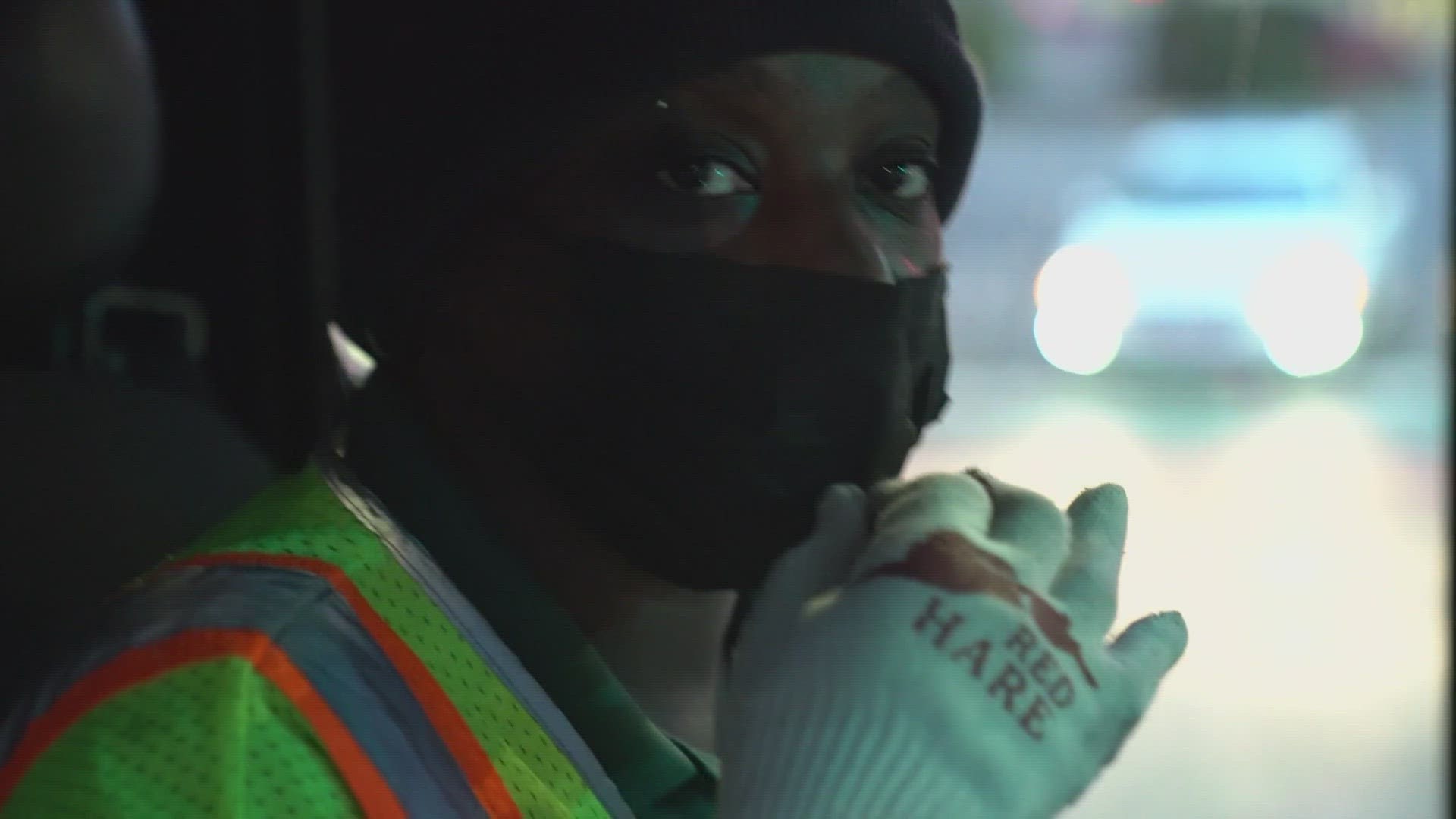WASHINGTON, USA — The signs of drug use are everywhere, and bus drivers are frustrated.
“The doors are open and it’s just woof. All at once and then sometimes they’ll even come on the bus with the foil and the straw in their mouth getting high,” said Metro Bus Operator Marie Santil.
She sees drug use on Metro Buses often, especially at bus stops.
“We literally sit and breathe these substances every day without a break,” said Santil.
Santil isn’t a first responder, but when she gets behind the wheel of her Metro bus, she feels like one.
In her five-and-a-half years as a bus driver, Santil said people smoking meth and fentanyl on her bus have left her traumatized. In one month, she said she used Narcan to revive people who had overdosed three different times.
“We’re human just like everyone else. I cry if I can’t save a life. I take that personally because I feel like I should have done better,” said Santil.
On Santil’s route, she said it’s not just the passengers passing out. She said on a particularly bad day, while driving, it happened to her.
“The next thing I knew to happen was a passenger waking me behind the wheel saying I passed out, so that kind of freaked me out,” said Santil.
There’s new science to back up how Santil feels about the dangers in her work environment.
A University of Washington study of public buses and trains found fentanyl in 25% of air samples and nearly 50% of surface samples. Methamphetamine was found in nearly 100% of air and surface samples.
“I won’t let my kid ride the bus, you see people smoking every day,” said a passenger who was waiting for a Metro Bus.
We asked UW researchers who did the study if bus drivers are safe.
“The risks to operators are much different than they are to the riding public and that needs to be acknowledged and this is something that we don’t have data to know what a lifetime exposure to these agents looks like for someone who is operating a bus or train for 10 hours a day,” said Marissa Baker, who worked on the study and is an assistant professor with the UW Department of Environmental and Occupational Health Sciences.
For Santil, it’s the lack of knowing that is scary. Two weeks after being exposed to second-hand smoke, she ended up in the hospital. She thought she’d had a stroke.
“It felt like I was dying,” said Santil.
Medical records show Santil was admitted for numbness and weakness in her left side. We talked with her after a follow-up doctor’s appointment.
“It’s the unknown for me. Is it fentanyl? Is it a heart condition? Is it a cervical condition in terms of my neck? It’s the unknown for me and it’s just very frustrating because at the end of the day, I have to provide for myself and I have to get up to go to work,” said Santil.
So far Santil’s doctors can’t say if it was drug exposure that caused her symptoms, therefore she hasn’t filed a claim for workers' compensation. However, many of her colleagues have.
State records show in the last five years, workers' compensation claims for second-hand smoke exposure to illicit drugs skyrocketed by more than 800%. Workers filing the claims were janitors and social service workers, but the vast majority were bus drivers.
“It’s a matter of time before they realize this is hurting us in the long term,” said Santil.
Of the workers who said they’d gotten sick from exposure to drugs, about 40% had their claims accepted. That doesn’t mean drugs didn’t harm the rest, it means according to the state, they couldn’t prove it.
"The risk is minimal to negligible both to riders and to operators," said Dr. Faisal Khan, who is the Director of Public Health for Seattle and King County.
Khan spoke in a joint Zoom press conference in September with King County Metro and other agencies where they minimized the risk.
In their study, the UW researchers made cleaning recommendations.
“Because we do not know, we should be trying to control these exposures to a low level, we should be doing everything we can to keep the operators safe and not exposed,” said Baker.
In response, King County Metro, Sound Transit and three other agencies are adding better air filtration systems, increasing security, and implementing deep cleaning protocols.
Drivers like Santil said that’s not enough, “I have to think about how I’m doing to protect myself at work…It’s the way of the world, I’ve got to work.”
KING 5 featured a King County Metro Bus Driver in this story, but the claims to Labor and Industries (L&I) are for the whole state.
That doesn't mean to imply they all came from King County. KING 5 reached out to the county directly, and they didn’t want to do an interview but did send a statement to say this year they’re seeing a drop in complaints about drug use on their buses.
Claims to Metro are different than claims submitted to L&I.

